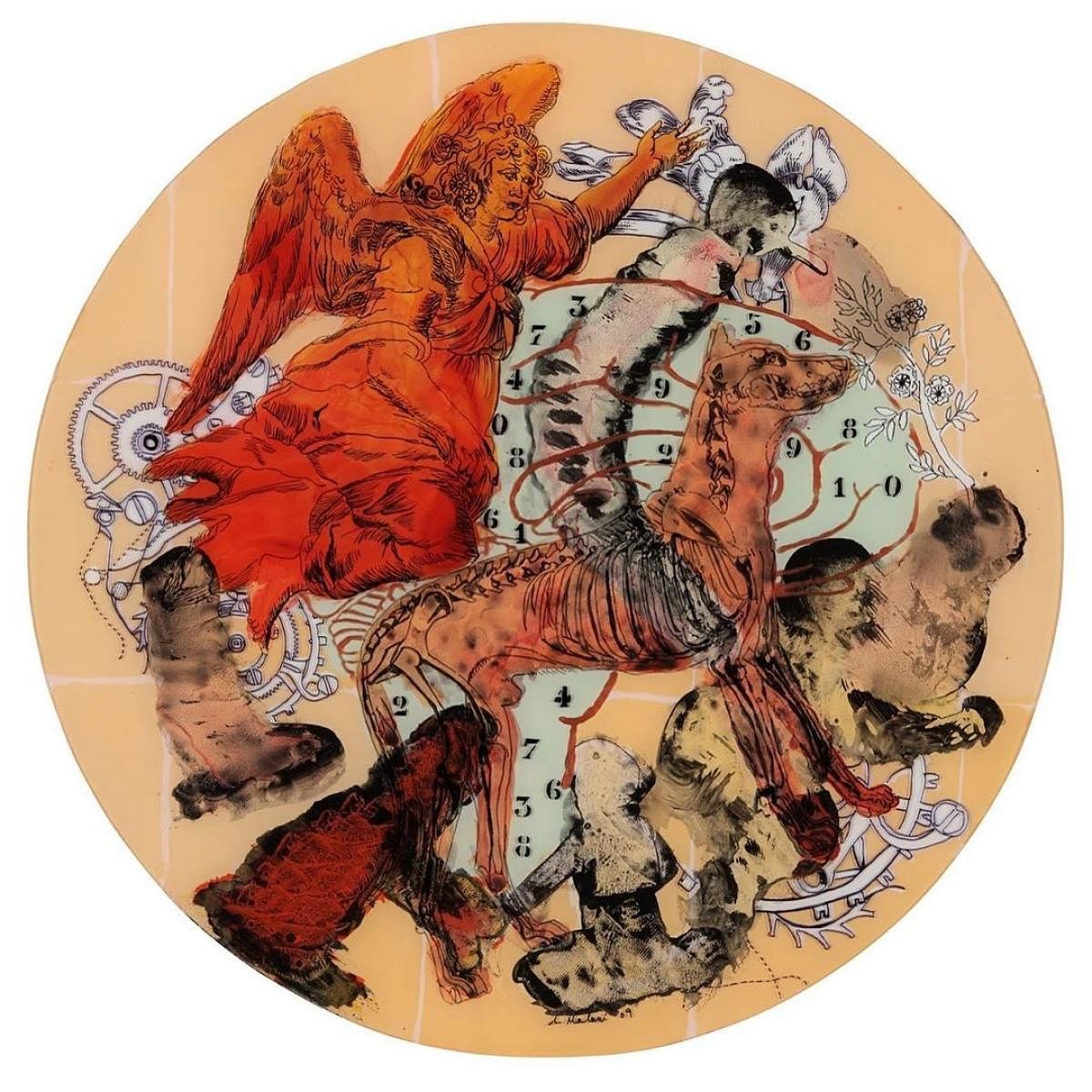
In 2013, Nalini Malani became the first Asian woman to receive the prestigious Arts & Culture Fukuoka Prize for her “consistent focus on such daring contemporary and universal themes as religious conflict, war, oppression of women and environmental destruction.”
The eminent multi-media multi-disciplinary practitioner recently added another feather to her cap. She became the first Indian to win the esteemed 2019 Joan Miró Prize, which conveys €70,000 and a solo show at the Fundació Joan Miró in Barcelona in 2020.
Applauding her accomplishments, the prize’s jury said: “By alluding to a myriad of cultural references from both East and West, Malani has built an impressive body of work that engages viewers through complex, immersive installations that present her vision of the battered world we live in. Her interest in ancient mythology, both Greek and Indian, as well as in modern symbols and image-making, has allowed her to develop a very personal, cosmopolitan iconographic mingling that boldly denounces contemporary violence and injustice, and their effects on planetary life.”
A long journey
The 72-year-old Mumbai-based artist has been one of the flagbearers of Indian art for decades. Her works have been regularly (and often concurrently) shown at the world’s most prominent galleries and museums. Such is her reputation that this year alone, Malani’s work is being exhibited at Louisiana Museum of Modern Art; UNHCR Palazzo Querini Venice; Sharjah Biennale; Irish Museum of Modern Art, Dublin; Museum of Modern and Contemporary Art Gwacheon (South Korea); Kasturibhai Lalbhai Museum (Ahmedabad); and 12th Shanghai Biennale.
Born in 1946 in Karachi, Malani and her family were among those affected by the country’s Partition. “I was less than one when my mother and I came away (from Karachi to Calcutta). My maternal grandfather was keen that we moved away quickly before the riots began. He foresaw that things would turn bad, especially for people who were of the landed gentry, because they were being attacked by their own workers. When I think about this, to my mind this was more to do with a spontaneous revolt by the dispossessed rather than communalism.”
Eventually, Malani’s family moved to Bombay where she grew up. In 1969, she obtained a diploma in fine arts from the Sir J J School of Art. Soon after, a French government scholarship took her to Paris where she stayed from 1970 to 72.
In Paris, besides art, she also got exposed to Marxist ideology by attending lectures of Noam Chomsky, Jean-Paul Sartre, Simone de Beauvoir and others.
Her return to India in 1973 saw her mature as a practising artist. She began working with conventional painting, drawing and photography, but was soon drawn to exploring and experimenting in several other mediums. An early practitioner of new media, she has, over the decades, fashioned an exceptional range of large-scale installations, multiple projections, video/shadow plays, manuscript illuminations, magic-lantern illustrations and theatrical performances, to complement her reverse paintings and expressionist drawings.
Malani explains that while the medium might change, the same thought process or idea runs through several types of her artworks.“The exigency of the situation often directs me to a certain medium… So it’s the exigency of how the thought has developed. This is actually what brings forth the material. The idea, the concept and the medium dovetail into each other.”
Political themes
Malani’s work is boldly and unapologetically political. She has employed her art to unsparingly criticise and condemn atrocities of any kind, be they human, moral, physical, psychological or ecological. An inveterate feminist and urbanist, she has constantly endeavoured to merge local realities with universal strains in her work.
Female characters from history, literature or mythology make a copious presence in many of her works. Malani feels that there is a lot to be learnt from past events.
“Memory is what you are, past is in the present and in the future.” She bemoans how violence in any form begets violence and constructs a vicious circle of unending conflicts and human distress. “Cutting the country on religious lines was terrible in itself, but more terrible because they left behind a tool for further cutting, for the right wing to do whatever they like. In 1992, the Babri Masjid was broken by hammers. And under the guise of communal problems, construction companies join hands with fascists to destroy the slums, in places where everybody was living together in complete harmony.”
Tracing painful journeys
Among her many memorable works was Remembering Toba Tek Singh (1998) which traced the country’s journey from Partition to nuclear tests in 1998. Malani recalls: “Shown at the Prince of Wales Museum, Mumbai … the work had three large screens surrounding the people completely with large images. I also had mirroring on the floor – so when you walked in, you were reflected on the floor. It was like exploding cinema.”
Mother India: Transactions in the Construction of Pain (2005) was a powerful work which exposed the horrors of extreme sexual violence inflicted upon women. “The woman as mutant, de-gendered, violated beyond imagination, has been an on-going pre-occupation in my work.”